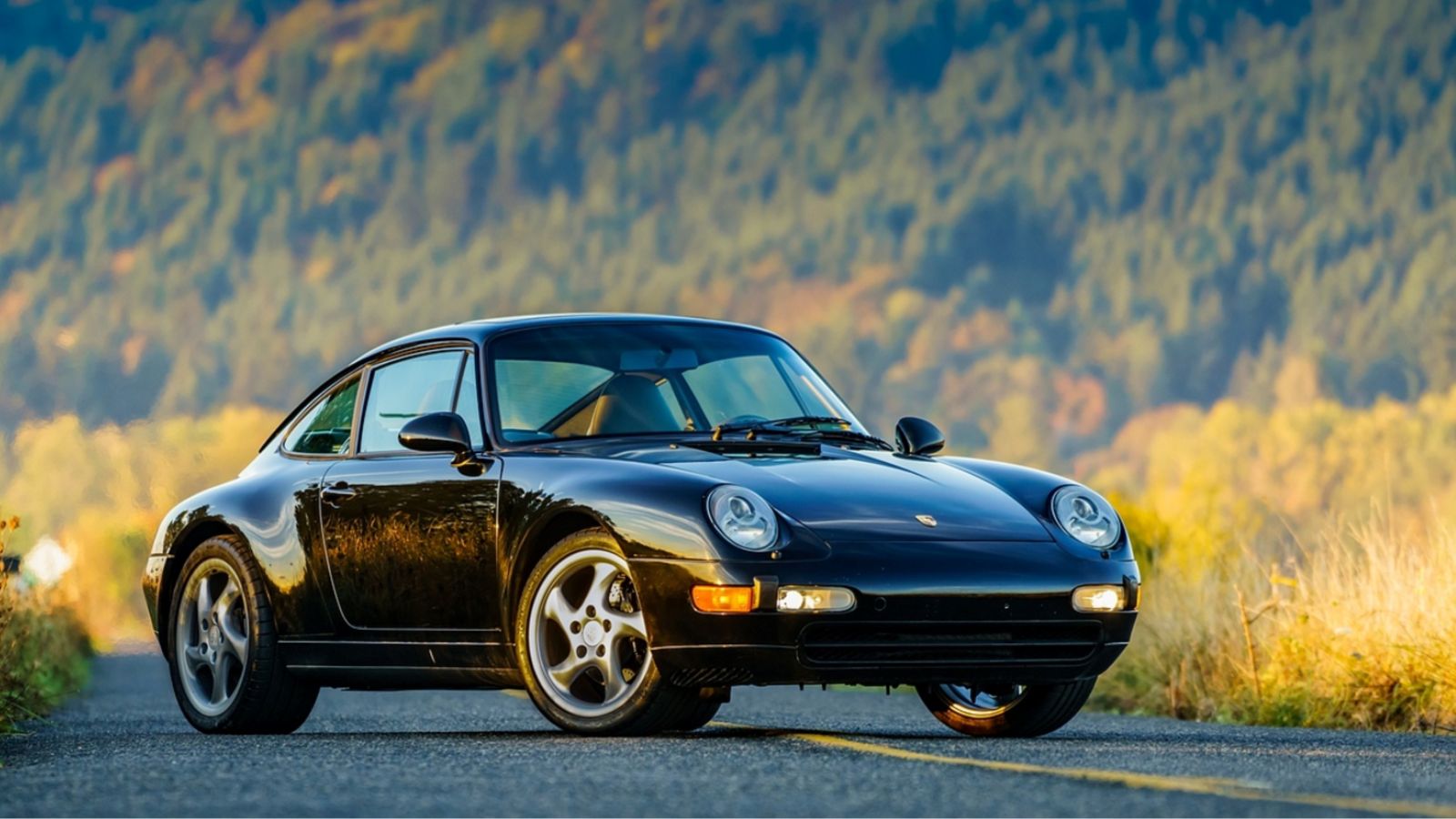Classic car enthusiasts are passionate about these cars but often struggle to restore and maintain them, with many prone to rusting, electrical problems, and overheating. Here are 18 beloved classic vehicles that are well-renowned, but a nightmare to maintain.
Jaguar E-Type

The Jaguar E-Type is known for its complex engine layout, with inline-6 and V12s notoriously difficult to access and work on. Vintage E-types are also known for their unreliable electrical systems, which can sometimes be repaired by the average vintage car enthusiast but often require expert attention. Restoring these classic cars can also be challenging when dealing with their rust-prone lower body panels and floorboards.
Porsche 911 (Air-Cooled Models)

Some air-cooled Porsche 911s have rear-mounted engines, making routine maintenance tasks more difficult than in front-engine classic cars. Additionally, according to Steve’s Imports, older air-cooled engines “have a high rate of thermal expansion and contraction as well as a good amount of sealing surfaces. Combine those two factors, and Porsche owners get multiple potential oil leaks.” Common leaks for these classic models occur in the valve covers, chain tensioners, and cover valve cover gaskets.
Alfa Romeo Spider

The Alfa Romeo Spider, first produced in 1966, is a beloved classic car known for its high maintenance requirements. Classic Spiders rust easily, especially around the wheel arches and sills, making frequent and thorough inspections necessary. Romeos of earlier eras often suffered from electrical gremlins, which complicated troubleshooting, and their twin-cam engines also required regular and meticulous tuning.
Ferrari 308 GTB/GTS

Ferrari 308 GTB/GTS were produced during the 1975–1985 period. These classic cars require engine removal for timing belt changes, driving up maintenance costs significantly. Earlier models with carburetors also needed frequent adjustments to maintain smooth running. The interiors, especially the leather and dashboard, are prone to wear and tear, adding to restoration costs.
Citroën DS

The Citroën DS is known for its innovative but complex hydraulic system that controls suspension, brakes, and steering, which requires specialized knowledge to maintain. While reliable, the engine and gearbox setups of this classic car are unconventional, complicating adjustments and repairs. Also, as Bring a Trailer notes, the frame is particularly susceptible to rust in the chassis and sills.
BMW 02 Series

The BMW 02 series suffers from carburetion issues, with models often requiring frequent adjustments. They’re particularly rust-prone around the wheel wells, doors, and fenders, requiring constant rust prevention. The suspension is also known to wear out quickly, requiring regular replacement.
Chevrolet Corvette (C3)

The third generation of Chevrolet sports cars featured a complex vacuum system for headlight and wiper door operation that is prone to failure and difficult to diagnose. The fiberglass bodywork requires specialized repair techniques that are more complex than metal repairs. Overheating can also be an issue due to the C3 engine bay’s tight confines, necessitating vigilant maintenance of the cooling system.
Ford Mustang (First Generation)

Early models of the Mustang came with drum brakes that offered less stopping power, with Motor Trend noting that they required costly maintenance. The Mustang is also prone to rust around the wheels, floor pans, and trunk, requiring constant supervision.
MGB

The MG MGB sports car’s Lucas electrical system is infamous for its reliability issues, often leading to unusual electrical problems. The cooling system is also prone to overheating, especially if driven in warmer climates or during extended uses, necessitating upgrades to the cooling system.
Triumph TR6

The Triumph TR6 was produced between 1968 and 1976, and early models featured a fuel injection system that was complex and unreliable, often needing to be replaced with carburetors. The clutch system is also known for being heavy, while the gearbox can be notchy and often requires refurbishment. The chassis and floor areas are highly susceptible to severe rust, requiring diligent care.
Fiat 500 (Classic)

Classic Fiat 500s have small, air-cooled engines prone to overheating, requiring regular tuning. These cars are especially vulnerable to rust in wet climates, with it often appearing in hard-to-spot places. While many spare parts are surprisingly affordable, some specific components for restoration are expensive.
Volkswagen Beetle (Classic)

Classic Volkswagen Beetles are widely praised for their air-cooled engines, with Slash Gear noting, “The Volkswagen air-cooled engine is remembered amongst people who have owned one as reliable [and] easy to maintain.” But over time, they require frequent rebuilds and maintenance to keep them running smoothly. The older drum brake system may also require upgrades and frequent maintenance.
Mercedes-Benz 300SL Gullwing

The Mercedes-Benz 300SL Gullwing was one of the first car models to use direct fuel injection, which can be complicated and expensive to maintain. The aluminum body panels and tubular frame construction of the Gullwing require specialized repair skills, which may require help to locate. In addition, the complex suspension setup, which includes a swing axle rear, demands expert attention for correct maintenance and repair.
Rolls-Royce Silver Shadow

This full-sized luxury car was produced in various forms from 1965 to 1980. The vehicle uses a high-pressure hydraulic system for brakes and a self-leveling suspension, which is infamously tricky to service. The Silver Shadow is also known for its complex electrical systems that are difficult to diagnose and repair, often necessitating service from specialized mechanics.
Lancia Beta

The Lancia Beta is notorious for rusting, with Wikipedia noting that the 1st Series vehicles (1972–1975) were particularly rust-prone—extensive bodywork and restoration efforts were often required as a result. The Beta also suffers from electrical issues, frequently needing troubleshooting and repairs.
Mini Cooper (Classic)

The Classic Mini Cooper features a unique suspension system that can be difficult to maintain and replace and is rust-prone in the sills, floor pans, and around the subframes. The compact engine bay often leads to overheating issues, so careful monitoring and maintenance are a must.
Datsun 240Z

The Datsun 240Z’s SU carburetors can be finicky, requiring regular tuning and adjustment to ensure optimal performance. The car is also known for electrical quirks that can be frustratingly difficult to diagnose and fix. Additionally, the 240Z is prone to rust in the floor pans, wheel arches, and under the battery tray.
Saab 900 Turbo

The Saab 900 Turbo features a robust turbocharged engine that can be costly to repair if issues arise. The Turbo also features unique design features, like the wraparound windshield, which can add to repair and replacement costs. Rusting is likely in the wheel wells, undercarriage, and around the windshield.
Read More: 17 Things Society Can No Longer Do Because Gen Z Said So

Gen Z, our digital-native, trendsetting generation, is making waves in the cultural sea, steering the ship of societal norms in fresh and unexpected directions. As they charter new territories, there are certain practices they’d rather we say goodbye to. Curious? Let’s take a look at 17 things the rest of us can no longer do because Gen Z said so.
17 Things Society Can No Longer Do Because Gen Z Said So
19 Big Mistakes People Make After Losing a Spouse

Losing a spouse is one of life’s most tragic experiences, and when we’re overwhelmed by grief, we might make some decisions that we’ll later regret. Here are 19 mistakes people make after losing their spouse.
19 Big Mistakes People Make After Losing a Spouse
20 Time-Honored Practices Our Grandparents Followed That We Should Bring Back

Our grandparents had a far simpler life. There was no such thing as social media. Instead, there was more walking and meals were always fresh and homemade. With so many things keeping us busy nowadays, sometimes life would seem much easier if we lived the way our grandparents did.
20 Time-Honored Practices Our Grandparents Followed That We Should Bring Back
19 Common Behaviors of Highly Intelligent People

Intelligent individuals often display a range of behaviors and qualities that set them apart from others. When exploring these characteristics, it’s crucial to comprehend that intelligence is a multifaceted attribute. Here are 19 essential behaviors and qualities frequently observed in highly intelligent people.
19 Common Behaviors of Highly Intelligent People
17 Things We Were Taught in High School That We Now Know Aren’t True

Well, this one may depend on when you went to high school, but for this millennial, these are the things we were taught in high school that have been proven not to be true. Personally, I still want to go back and correct every teacher who told me I wouldn’t always have a calculator in my pocket; the joke is on them.
17 Things We Were Taught in High School That We Now Know Aren’t True
